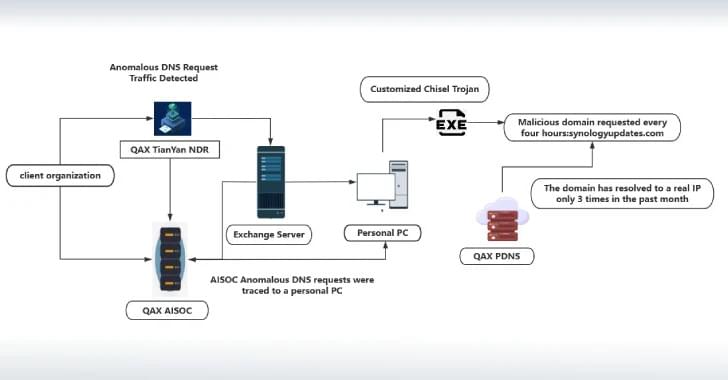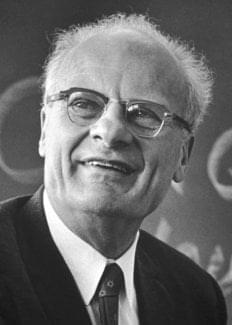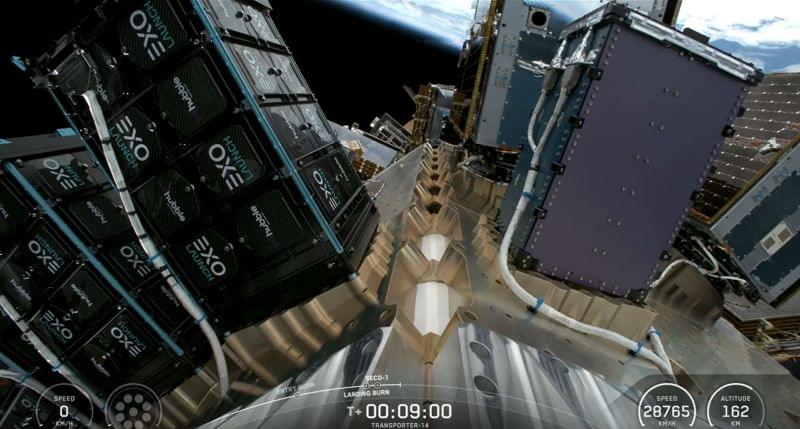The laser weapon can kill mosquitoes, and it also has a detection system which makes it safe for humans and pets.
Category: military

NightEagle APT Exploits Microsoft Exchange Flaw to Target China’s Military and Tech Sectors
Cybersecurity researchers have shed light on a previously undocumented threat actor called NightEagle (aka APT-Q-95) that has been observed targeting Microsoft Exchange servers as a part of a zero-day exploit chain designed to target government, defense, and technology sectors in China.
According to QiAnXin’s RedDrip Team, the threat actor has been active since 2023 and has switched network infrastructure at an extremely fast rate. The findings were presented at CYDES 2025, the third edition of Malaysia’s National Cyber Defence & Security Exhibition and Conference held between July 1 and 3, 2025.

Deus Ex Could Be a Command & Conquer RPG — John Romero Saved The Game
Spector originally pitched the project under the working title Troubleshooter at his former studio, Origin Systems. He wanted to create something truly new, saying he was tired of space marines, aliens, and wizards in hats.
The main character of Troubleshooter was meant to be Jake Shooter, a super-cop called in by secret agencies for high-risk missions.
“Deus Ex was part shooter, part stealth game, part RPG. I mean, how do you sell that? The argument I got from the Thief folks was that if you give players a gun, they won’t sneak. I was also asked, ‘Why don’t you just make a shooter?’ I learned the power of the word ‘no’ when pitching Deus Ex, let me tell you,” said Spector.
AI designs new underwater gliders with shapes inspired by marine animals
Marine scientists have long marveled at how animals like fish and seals swim so efficiently despite having different shapes. Their bodies are optimized for efficient aquatic navigation (or hydrodynamics), so they can exert minimal energy when traveling long distances.
Autonomous vehicles can drift through the ocean in a similar way, collecting data about vast underwater environments. However, the shapes of these gliding machines are less diverse than what we find in marine life—the go-to designs often resemble tubes or torpedoes, since they’re fairly hydrodynamic. Plus, testing new builds requires lots of real-world trial-and-error.
Researchers from MIT’s Computer Science and Artificial Intelligence Laboratory (CSAIL) and the University of Wisconsin-Madison propose that AI could help us explore uncharted glider designs more conveniently. The research is published on the arXiv preprint server.

Hans Bethe — Biographical
Hans Albrecht Bethe was born in Strasbourg, Alsace-Lorraine, on July 2 1906. He attended the Gymnasium in Frankfurt from 1915 to 1924. He then studied at the University of Frankfurt for two years, and at Munich for two and one half years, taking his Ph. D. in theoretical physics with Professor Arnold Sommerfeld in July 1928.
He then was an Instructor in physics at Frankfurt and at Stuttgart for one semester each. From fall 1929 to fall 1933 his headquarters were the University of Munich where he became Privatdozent in May 1930. During this time he had a travel fellowship of the International Education Board to go to Cambridge, England, in the fall of 1930, and to Rome in the spring terms of 1931 and 1932. In the winter semester of 1932–1933,he held a position as Acting Assistant Professor at the University of Tubingen which he lost due to the advent of the Nazi regime in Germany.
Bethe emigrated to England in October 1933 where he held a temporary position as Lecturer at the University of Manchester for the year 1933–1934, and a fellowship at the University of Bristol in the fall of 1934. In February 1935 he was appointed Assistant Professor at Cornell University, Ithaca, N. Y. U.S.A., then promoted to Professor in the summer of 1937. He has stayed there ever since, except for sabbatical leaves and for an absence during World War II. His war work took him first to the Radiation Laboratory at the Massachusetts Institute of Technology, working on microwave radar, and then to the Los Alamos Scientific Laboratory which was engaged in assembling the first atomic bomb. He returned to Los Alamos for half a year in 1952. Two of his sabbatical leaves were spent at Columbia University, one at the University of Cambridge, and one at CERN and Copenhagen.

SpaceX launches UK satellite to create semiconductors in low Earth orbit — sub-zero temps and vacuum of space could advance AI data centers and quantum computing
In-space manufacturing is a relatively new field that seeks to utilize the unique characteristics of outer space and/or low-Earth orbit to achieve fabrication methods not possible on Earth. Space Forge’s primary goals are to produce semiconductors for data center, quantum, and military use cases, using “space-derived crystal seeds” to initiate semiconductor growth, utilizing unlimited vacuum and subzero temperatures for manufacturing, and then returning the chips to Earth for packaging.
The ForgeStar-1 satellite will not bring the cargo it manufactures back to Earth at the completion of its mission. Acting more as a proof-of-concept and prototype for a litany of technologies engineered by Space Forge, the satellite will be tasked with running through the successful application of key technologies for in-space manufacturing, and will end its mission with a spectacular fireball.
Space Forge plans to test both the best-case and worst-case scenarios for the satellite’s recovery. First, it will deploy its proprietary Pridwen heat shield and on-orbit controls to steer the satellite, and then test its failsafe mechanism, which involves disintegrating the craft in orbit.

GIFTEDCROOK Malware Evolves: From Browser Stealer to Intelligence-Gathering Tool
The threat actor behind the GIFTEDCROOK malware has made significant updates to turn the malicious program from a basic browser data stealer to a potent intelligence-gathering tool.
“Recent campaigns in June 2025 demonstrate GIFTEDCROOK’s enhanced ability to exfiltrate a broad range of sensitive documents from the devices of targeted individuals, including potentially proprietary files and browser secrets,” Arctic Wolf Labs said in a report published this week.
“This shift in functionality, combined with the content of its phishing lures, […] suggests a strategic focus on intelligence gathering from Ukrainian governmental and military entities.”
Brad Younggren | Therapeutic Plasma Exchange (TPE): A Tool Against Aging and Disease
Offering TPE. I do not see a cost though.
*Apply to join Foresight Biotech & Health Extension program:* https://foresight.org/biotech-health-extension-program/
A group of scientists, entrepreneurs, funders, and institutional allies who cooperate to advance biotechnology to reverse aging and extend human healthspan. This group is sponsored by 100 Plus Capital. http://100pluscap.com/
*Foresights Personal Longevity Group* Exploring anti-aging methods, monthly virtual meetings, expert discussions, private group for Foresight Patrons. https://foresight.org/personal-longevity-group/
*Brad Younggren | Therapeutic Plasma Exchange (TPE): A Tool Against Aging and Disease*
Bio: Brad Younggren, MD, is CEO and co-founder of Circulate Health, a company dedicated to extending human healthspan. A former U.S. Army physician, Dr. Younggren served as a combat physician in Iraq and was awarded a Bronze Star and Combat Medical Badge. An emergency medicine specialist and seasoned healthcare executive, Younggren has led teams at the cutting edge of medicine for decades. Most recently, he was President and Chief Medical Officer at 98point6, where he led the development and launch of AI-powered primary care solutions. He previously served as CMO at Cue Health, Shift Labs, and Mobisante. At Circulate, Younggren leads an expert team of clinicians and scientists working to harness the potential of therapeutic plasma exchange to advance health and longevity.
https://www.circulate.health/
Abstract: Aging is the primary risk factor for most chronic diseases, driving over 90% of U.S. healthcare expenditures. However, emerging science suggests that aging itself can be targeted as a modifiable process. Therapeutic Plasma Exchange (TPE) is a promising intervention that removes harmful substances from the bloodstream, reducing inflammation, disease burden, and potentially reversing aspects of biological aging. Circulate Health is pioneering this space, with clinical trial data demonstrating measurable reductions in biological age and improvements in key biomarkers. Beyond its longevity benefits, recent findings suggest TPE may help reduce microplastics and other environmental toxins—offering a practical, scalable approach to mitigating modern health threats. In this talk, we’ll explore the science behind TPE, its clinical applications, and why Circulate Health’s model makes this groundbreaking treatment accessible to more patients and clinics.

Human Cyborgs Are No Longer Science Fiction! (Insane Breakthroughs)
Are human cyborgs the future? You won’t believe how close we are to merging humans with machines! This video uncovers groundbreaking advancements in cyborg technology, from bionic limbs and brain-computer interfaces to biological robots like anthrobots and exoskeletons. Discover how these innovations are reshaping healthcare, military, and even space exploration.
Learn about real-world examples, like Neil Harbisson, the colorblind cyborg artist, and the latest developments in brain-on-a-chip technology, combining human cells with artificial intelligence. Explore how cyborg soldiers could revolutionize the battlefield and how genetic engineering might complement robotic enhancements.
The future of human augmentation is here. Could we be on the verge of transforming humanity itself? Dive in to find out how science fiction is quickly becoming reality.
How do human cyborgs work? What are the latest AI breakthroughs in cyborg technology? How are cyborgs being used today? Could humans evolve into hybrid beings? This video answers all your questions. Don’t miss it!
#ai.
#cyborg.
#ainews.
====================================